 U.S. Particle Accelerator School
U.S. Particle Accelerator School
The Mel Month Scholarship in Accelerator Science and Engineering
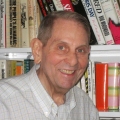
The Mel Month Scholarship supports the study of Accelerator Science and Engineering (AS&E) by fully funding costs associated with attending a USPAS session. This merit-based award is named in honor of Dr. Mel Month, the founding father of the U.S. Particle Accelerator School. The study of AS&E was always an important cause for Mel and this award has been generously funded by the Month family to further progress in a cause that Mel has held dearly throughout his long and influential career. A biography of Dr. Month follows below.
Eligible scholarship recipients are actively enrolled domestic or foreign students in Science, Technology, Engineering, or Mathematics (STEM) fields. Students who request a USPAS scholarship on their application form will automatically be considered for the enhanced Month Scholarship. Students may receive more than one Month Scholarship. In addition to covering items included in our usual financial aid packages (registration fee, group breakfast & dinner, shared housing, textbooks & course materials, host university course fees), the Month scholarship also provides a lunch per diem and most travel expenses to and from the USPAS session. Two scholarships will be granted per session.
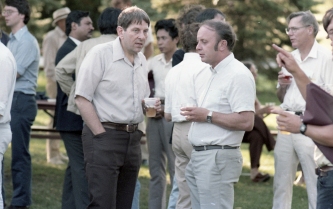
Mel Month Biography
Dr. Month received his PhD in Physics from McGill University in 1964 and his MBA from Hofstra University in 1971. His PhD dissertation topic was "The two pion exchange contribution to π⁺ production in proton-proton collisions at 970 Mev" under the guidance of Prof. R.T. Sharpe. In 1966, after two years as a postdoctoral student under Prof. J.D. Jackson at the University of Illinois in Urbana-Champaign, Mel joined the technical staff at Brookhaven National Laboratory (BNL) where he began a research career in the theory of particle beams and accelerators. At BNL, Mel worked in the High Energy Accelerator Theory Department and then transitioned to the Collider Accelerator Department when the Isabelle project began.
Photo: Mel Month with Ted Wilson at the "U.S. Summer School on High Energy Particle Accelerators" held at Fermilab in 1984. Many years later, Wilson became the 3rd director of the CERN Accelerator School. (S.Y. Lee, who would become the second USPAS director from 1998 to 2001, is captured in the background between them.)
Recognizing the importance of management in accelerator laboratories as a result of their complexity, size and advanced technology, during the 1970s he turned his attention toward management areas. From 1979 to 1983, he served in Washington DC, in the US Department of Energy helping in the administration of the High Energy Physics Program. In 1980, after serving on an accelerator R&D DOE panel, he perceived a growing need for education in the technology-dominated field of accelerators. Even early in his career, Mel was a strong advocate for education. He recognized that university curricula at the time were inadequate to prepare students for careers in accelerator science and engineering. This realization sparked his vision for what would eventually become the U.S. Particle Accelerator School.
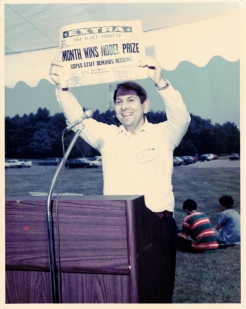
In 1981, Mel organized the first symposium-style accelerator school at Fermilab. Initially, one school was held each summer, rotating between Fermilab, SLAC, and Brookhaven National Lab. These sessions were very popular and continued until 1989. In 1987, Mel established the current university-style format courses that provide academic credit under an intensive format where a full three semester hours of graduate-level credit is compressed into a 2-week duration session. The first university credit courses were held at Fermilab in June of 1987 and were sponsored by the University of Chicago. Four courses were offered that first year: High Energy Storage Rings by Dick Talman, Relativistic Electronics by Victor Granatstein, Particle Beams: Magnetic Optics by Karl Brown and Particle Beams: Acceleration by Perry Wilson.
Photo: Closing ceremony of the last symposium-style school, held in 1989 at Brookhaven National Lab.
The university-style credit courses were immensely popular with students from the start. The serious nature of the for-credit format set the school apart from seminar series and workshops. The first university to host this new type of school was the University of Chicago. Then came Cornell University, UC Berkeley and Harvard University. More than 30 universities have awarded their credit to USPAS students. Not much has changed since that first 1987 session other than doubling the number of courses offered at each session. The university credit style schools quickly became so over-prescribed that in 1992 Mel doubled to two sessions per year (winter and summer) to meet demand. Mel's vision of delivering courses in an intensive format over a short period of time has worked very well for many years and the format of our present USPAS sessions remains relatively unchanged.
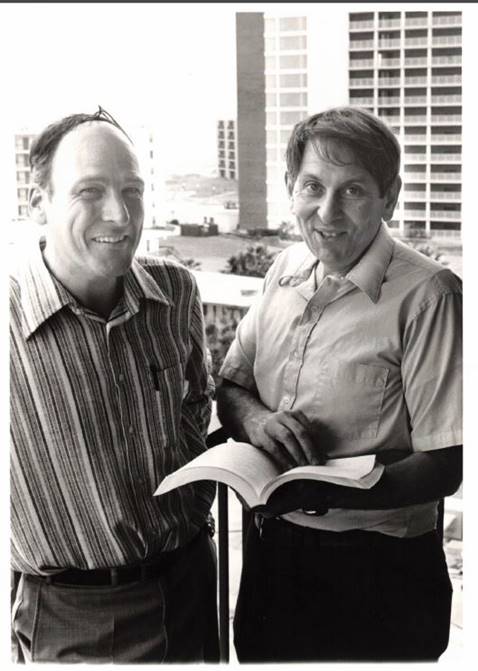
Building on the success of the US schools, Mel collaborated with the CERN Accelerator School in 1985 to organize a "Joint International Accelerator School" in Sardinia, Italy. This international series was designed to complement the US and European general schools by offering in-depth courses and seminars in specialized areas. Mel felt these jointly-organized sessions would foster a more collaborative atmosphere among the US and international accelerator communities. An advanced topical course was held every two years, alternating between the U.S. and Western Europe. Japan joined the collaboration in 1994, followed by Russia in 1998. Many new member states have joined since then.
Photo: CERN Accelerator School director Phil Bryant (left) and USPAS director Mel Month (right) at the US-CERN Joint Topical Course on "Frontiers of Particle Beams". This session was held in South Padre Island, Texas in 1986.Mel created the "US Particle Accelerator School Prize for Achievement in Accelerator Science and Technology" with initial awards in 1985. The USPAS prize honors individuals for their outstanding achievements across the full range of accelerator science and technology. Nominees are evaluated in four categories, 1) quality, impact and number of scientific/technical contributions to the field; 2) realization of concepts in working accelerators; leadership and vision in machine building; putting concepts into practice, 3) level of impact: degree to which concepts have led to the production of more or better science or has the potential for doing so in the future, 4) other factors, especially teaching and mentoring of young scientists and engineers. The first USPAS prizes were awarded in 1985 to Helen Edwards, John Madey, Ernest Courant, Stan Livingston and Robert Wilson.
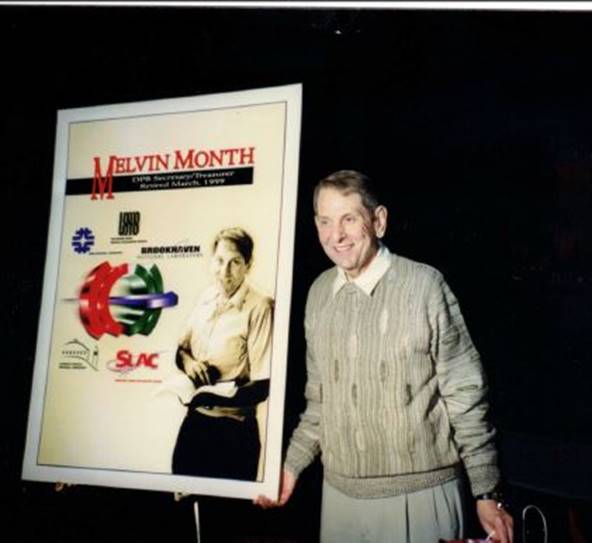
Around the same time that Mel initiated the USPAS Prize, he also founded the American Physical Society (APS) Topical Group on the Physics of Beams, which evolved into the APS Division of Physics of Beams (DPB) four years later. The APS DPB continues to this day serving as the primary voice of the field to US government and the public, facilitates communication and topical conferences within the field, runs important awards giving prestige, and represents the accelerator community in Physical Review journals.
Photo: Mel Month was honored for his service as American Physical Society Division of Physics of Beams Secretary-Treasurer from 1985-1999.
As he was planning USPAS course curricula, Mel noted that there were no real texts or reference books within the field of accelerator technology so he very effectively encouraged instructors to turn their USPAS courses into textbooks. The "Wiley Series in Beam Physics and Accelerator Technology" was the start of a long tradition of textbooks based on and inspired by USPAS courses. Mel was the series editor:
An Introduction to the Physics of High Energy Accelerators by Donald Edwards and Michael Syphers (1993);
Physics of Collective Beam Instabilities in High Energy Accelerators by Alex Chao (1993);
Theory and Design of Charged Particle Beams by Martin Reiser (1993);
Intermediate Classical Dynamics with Applications to Beam Physics by Leo Michelotti (1995);
Principles of RF Linear Accelerators by Thomas Wangler (1998);
RF Superconductivity for Accelerators by Hasan Padamsee, Jens Knobloch, Tom Hays (1998);
Managing Science: Management for R&D Laboratories by Claude Geles, Gilles Lindecker, Mel Month, Christian Roche (2000).
These texts are still used in USPAS courses today. You can see many other books that were inspired by USPAS courses highlighted at the top of this page https://uspas.fnal.gov/resources/books.shtml
When Harvard University hosted the USPAS in 1993, Mel worked with instructors Jay Flanz, Gerry Jackson and Bob Siemann to develop a new type of course that would give students hands-on experience with both laboratory measurement equipment and beam measurements in an actual accelerator and control room. Mel arranged to use the MIT Bates Accelerator Center control room and borrowed tabletop equipment like spectrum and network analyzers from HP, and offered the course "Accelerator Instrumentation and Beam Measurement Laboratory". This popular course was a precursor to the current core curriculum class "Microwave Measurements and Beam Instrumentation Lab" that is still offered regularly.
In 1997, Mel and Prof. SY Lee created the Indiana University/USPAS Master's Degree in Beam Physics and Technology. Enrolled students can earn a master's degree from Indiana University by attending USPAS courses. This unique program is an ideal option for working professionals seeking to further their education for career advancement.
Mel Month retired as USPAS Director and as a scientist from Brookhaven National Lab in 1997. Since his retirement, Mel has been quite prolific, writing in novel form:
- Of Dishonor: A Look into the Heart of Man, Authorhouse pub (2015)
- Deterrence: A Tale of Sex and Violence in Dangerous Times, Authorhouse pub (2010)
- Dreams and Shadows: An Inside Story of Science, Authorhouse pub (2009)
- Weep for Isabelle: A Rapsody in a Minor Key, Authorhouse pub (2003)
2025 Recipients:
Huizhong Ren, University of Southern California